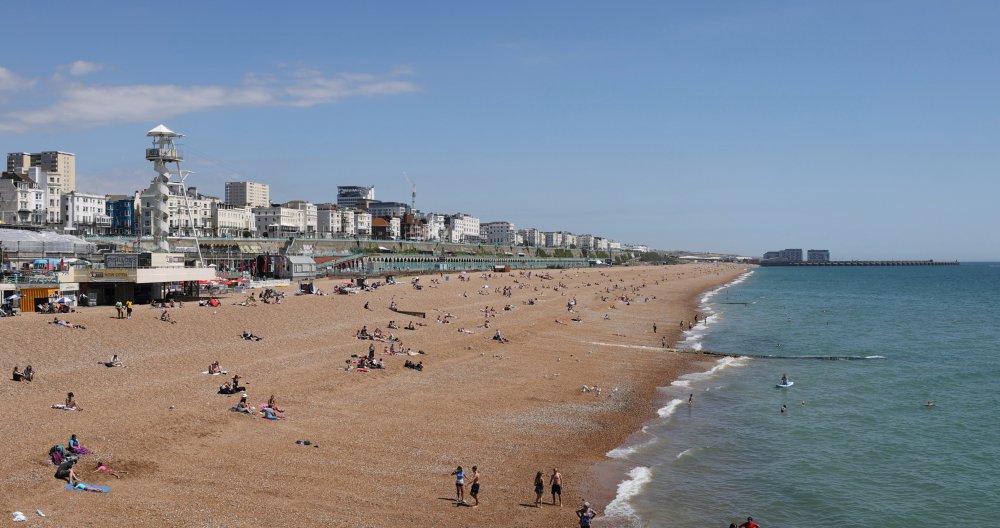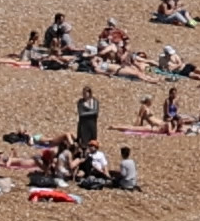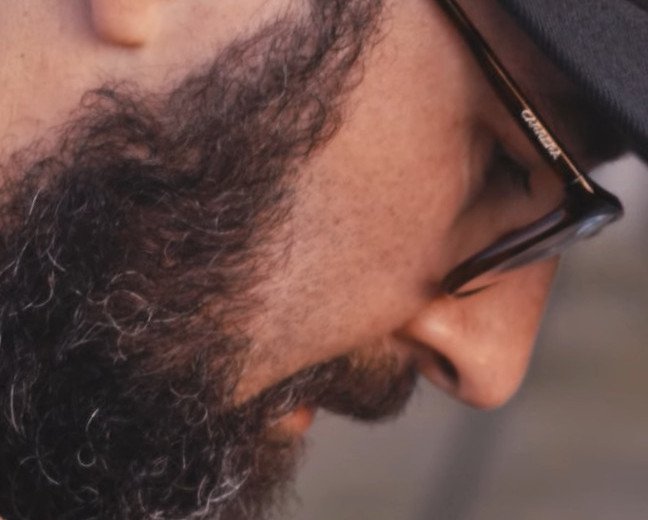-
Posts
321 -
Joined
-
Last visited
Content Type
Profiles
Forums
Articles
Everything posted by rawshooter
-

Testing Danne's new EOS-M ML Build (7/29/2020)
rawshooter replied to SoFloCineFile's topic in Cameras
Sorry, but this looks pretty terrible (blurry and grainy). Maybe something went wrong either during the shoot or postprocessing? -

Canon EOS R5 / R6 overheating discussion all in one place
rawshooter replied to Andrew Reid's topic in Cameras
The beach footage taken by Gordon Laing - where you can't even see sand textures when downscaling from 4K to HD - tells enough. -
Quoting @Andrew Reid's op-ed posting: "But it’s not the space-age camera some were anticipating from the rumours. " After the R5 debacle, I'd say: fortunately.... (Which means that I agree with Andrew's conclusions.)
-
No longer than offloading it. You can basically use Slimraw as an offloading tool to copy and simultaneously compress your footage from the SD card to your computer's hard drive.
-

Canon EOS R5 / R6 overheating discussion all in one place
rawshooter replied to Andrew Reid's topic in Cameras
Probably not, because Canon uses in-house manufactured chips on ancient technology/nanometer standards. That's why their sensor and codec performance always trailed the competition (particularly of big electronics manufacturers like Sony and Panasonic/Matsushita) in the past. Now they're apparently overdriving their technology in a desperate attempt of trumping their competition on the spec sheet/feature list. -
Not necessarily. cDNG is also quite light on the computer. If file sizes are a concern, you can use the program SlimRaw to internally compress the DNG in the same compression ratios as BRAW.
-
You can almost safely bet that Fuji's in-camera profiles a.k.a. film simulations are simply LUTs. The proof are Fuji's own LUTs for F-Log to Eterna - which yield the same image as the Eterna profile directly baked into the footage.
-

Canon EOS R5 / R6 overheating discussion all in one place
rawshooter replied to Andrew Reid's topic in Cameras
To be fair, 4:2:2 chroma subsampling in internal recording is generally welcome and overdue (if it came in a non-overheating camera...). While current GPU can't decode the material, you can still help yourself by transcoding to ProRes or DNxHR, respectively using render cache/Proxy workflows within NLEs. -
Never heard of that before you mentioned it - do you have a source?
-

Canon EOS R5 has serious overheating issues – in both 4K and 8K
rawshooter replied to Andrew Reid's topic in Cameras
I mean, I somehow can follow Canon's thinking - they're caught between a design/engineering/marketing dilemma of making the camera a big body with a fan like the S1H or the current body with the overheating, and then probably opt for the latter arguing that 90% of people will buy the camera for stills, that the smaller design cuts production costs, that professional video shooters should buy Cinema EOS cameras or the RED Komodo, yadayadayada.... But I really think that the camera industry is further digging itself into its own grave with such priorities. Like the car industry that rather pulls software tricks to pass environmental tests and sell its legacy tech, instead of radically innovating and building electric cars. Or like the film industry that moves its premieres into 2021 and 2022 instead of switching to streaming. So let's see how will follow Olympus. We might be surprised. And the R5/R6 fiasco needs some name ending with "gate". "Canongate"? "Heatgate"? -
AF and overheating are bummers with this camera. There doesn't seem to be a single mirrorless camera with APS-C sensor, IBIS, internal 10bit, reliable video AF (and no overheating).
-

Canon EOS R5 has serious overheating issues – in both 4K and 8K
rawshooter replied to Andrew Reid's topic in Cameras
We can now definitely write off the R5 as a lemon. -

Canon EOS R5 has serious overheating issues – in both 4K and 8K
rawshooter replied to Andrew Reid's topic in Cameras
So I got some flak for posting a YouTube screengrab - but now I can definitely confirm that the R5's video quality is atrocious in normal 4K mode. Gordon Laing/Cameralabs has uploaded straight-of-the-cam videos from the R5 in various quality settings which you can directly download (with a Vimeo account). Here's a full screengrab of the non-HQ/non-oversampled 4K intraframe mode: ...and here's a 1:1 crop of the region that's in focus: This doesn't even look usable when you downsample it to 2K. Original review & video links here: https://www.cameralabs.com/canon-eos-r5-review/ -

Canon EOS R5 has serious overheating issues – in both 4K and 8K
rawshooter replied to Andrew Reid's topic in Cameras
4K. -

Canon EOS R5 has serious overheating issues – in both 4K and 8K
rawshooter replied to Andrew Reid's topic in Cameras
I do. But you can't blame YouTube for that. For comparison, here's a screengrab from the YouTube webm stream, with identical bandwidth/codec to the Canon R5 home video, from a video shot with the Sigma fp - and that even has lots of motion blur: -

Canon EOS R5 has serious overheating issues – in both 4K and 8K
rawshooter replied to Andrew Reid's topic in Cameras
If you look at his footage, you see that the textures are completely missing/smoothed out. Either there was some face smoothing filter active in the camera, or this is the price you pay for non-oversampled 4K with the camera. (YouTube compression can't be blamed for that.) All faces look waxy, hair textures are either jaggy [=binning artefacts] or blurred out. This looks like video from first-generation video DSLRs, only at 4K instead of HD. You can see those shortcomings particularly well in his video because he doesn't use an ND filter and fast shutter speeds in their outdoor images, so there's no motion blur. (1:1 screengrabs from the highest-quality, directly ripped YouTube stream), -
Didn't he originally accuse his former business partner and Meike of stealing the Veydra lens designs?!?
-
It's just a shell company. JIP made a deal with the Chinese company Nexstgo (which sells generic laptops mostly to the Indian market: https://www.nexstgo.com/hk/en/products) that Nexstgo computers can be sold in Japan and Western countries with the Vaio label. The same will happen with the future "OM-D" and "Pen" cameras, and "Zuiko" lenses. Especially if you see how Chinese lens producers (like Viltrox and Yongnuo) are stepping up their game - they will probably be interested to sell their products with the Zuiko brand. JIP is a private equity firm, with no history of product development or manufacturing.
-
Just look at what JIP did with the Vaio laptop brand, and you get an idea of the future of Olympus' cameras and lenses. The future cameras and lenses won't even be called Olympus because JIP didn't acquire the right for that name, but only "Pen" and "OM-D" without any other brand name. I bet almost any price that they will slap these brands on rather generic Chinese cameras and lenses like the Xiaomi MFT camera and lenses.
-

Raspberry Pi Releases an Interchangeable-lens Camera Module
rawshooter replied to androidlad's topic in Cameras
The PyDNG developer has replied, and seems to be here on the forum as well: -
When you're recording at ISO 800, you're actually recording ISO 100 three stops underexposed, since ISO 800 is just ISO 100 pushed in software by three stops. (I.e. you get the same - identical - image if you dial down the camera to ISO 100 with the same aperture and shutter settings, have a totally underexposed image on the camera display, but later crank up the exposure slider in Resolve to +3). The camera has two native ISO, declared as "100" and "3200" by Sigma - which is correct only in relation to a Rec709/sRGB gamma, but in terms of raw exposure really mean "100" and "800" or, more likely, "400" and "3200". (Actually ISO 100 on the fp is as bright/fast as ISO 400 on a Blackmagic Pocket 4K/6K - tested it myself, so ISO 100 is probably a misnomer.) This is all legacy stuff for photographers, their working in sRGB, which in turn emulates slide film and the way people exposed film (as opposed to exposing ETTR). The real problem is that the camera doesn't have a Log profile. If Sigma had implemented a Log profile, it would also have had to adjust metering to it, probably resulting in the two native ISOs 400 and 3200 for Log, which automatically would have translated into correct exposure for RAW (since both Log and RAW capture the sensor's full dynamic range while Rec709/sRGB clips it).
-
The second native ISO 3200 is there for a reason, and it would be a shame to not make use of the excellent low light capabilities of the camera. I discovered this through exposing ETTR with the camera at ISO 3200, importing the footage into Resolve, and see that it was two stops underexposed. Even when the camera said that it was clipped with two stops over at ISO 3200, it turned out not to be clipped in Resolve (with highlight recovery turned off). So exposing at 2 stops lower (= ISO 800) gives you correct exposure for ISO 3200. If you're 2 stops under, it means that you're throwing away 2 stops dynamic range and 2 bits of color depth. The exposure implementation is typical, btw., for photo cameras and their focus on sRGB JPEGs. For sRGB JPEG/Rec709 non-raw movs, the camera's exposure indicators are correct. - Blackmagic, on the other hand, gives you correct raw exposure metering. Zebras are ISO-invariant in relation to the camera's native ISOs.
-
I'm trying to rephrase: The main problem is the camera's display/preview. You can get around the metering problems by metering the first native ISO with camera setting ISO 100 and the second with ISO 800. But the problem is that at ISO 800 setting, the camera still records at its first native ISO. It only makes the jump when set to ISO 3200. Now when you set it to ISO 3200, there are only two options: rely on the camera's metering and be 2 stops underexposed (and effectively throwing away 2 of the 12 bits color depth), or keep the metering from ISO 800, but then having a camera display that is two stops overexposed, i.e. where all the highlights are clipped. And that extends to HDMI monitoring, where the same clipped image is sent to the monitor. You literally won't see a lot of what you are recording when at ISO 3200 and having the camera correctly expose the image.










